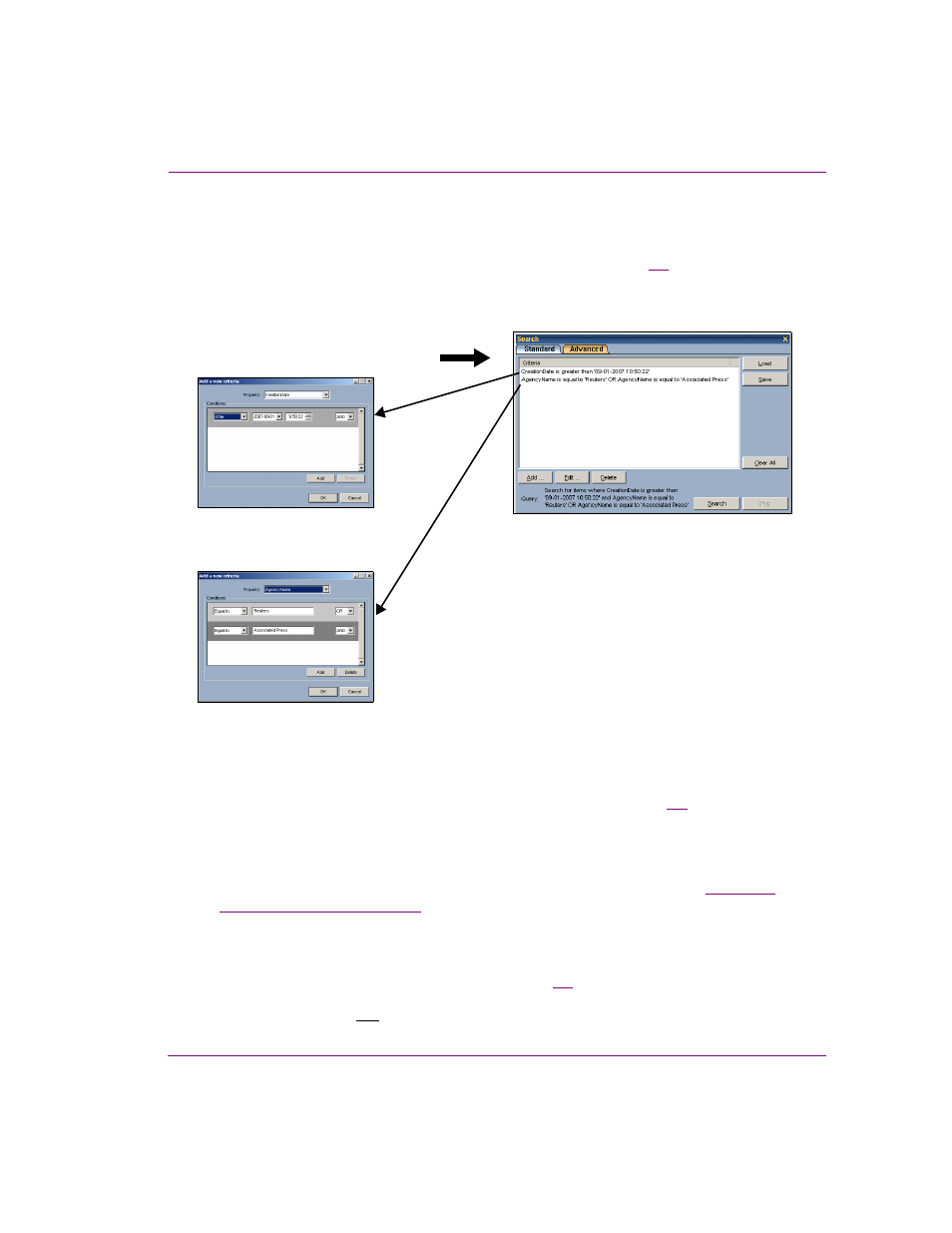Grass Valley Xplorer Vertigo Suite v.4.8 User Manual
Page 99

Xplorer User Manual
7-9
Appendix B - Searching for assets stored on the XMS
Advanced search criteria fields, controls, and summary
The advanced search interface retrieves assets by performing a query using the search
criteria that you build using searchable metadata properties. As figure
7-7
demonstrates, a
query can contain one or many search criteria, which are listed in the Criteria panel.
However, a search criteria can only contain one property.
Figure 7-7. An advanced search query is based on the search criteria’s metadata properties
You build a search criteria using the A
DD
A
NEW
CRITERIA
window (figure
7-7
), which is
accessed by clicking the A
DD
button on the advanced search interface. A search criteria
must only contain one metadata property, which you select from the P
ROPERTIES
drop-down
list. You can then set conditions to qualify the property (i.e. E
QUAL
TO
, B
EFORE
, C
ONTAINS
,
G
REATER
THAN
...etc.) and specify a specific search string (i.e. text, date, digits...etc.). A
functional description of each of the available metadata properties is provided in
Search Properties” on page 7-11
A search criteria’s property can contain one or many conditions. When using multiple
conditions for a property you have to specify in the C
ONDITIONS
panel how you want the
conditions to interact. Using the A
DD
setting combines the conditions, which generally
makes the search more restrictive. Again using figure
7-7
as an example, using the A
DD
conditions setting for the AgencyName property would find assets that were limited to those
distributed by Reuters and the Associated Press. Meanwhile, using the OR setting provides
A query is based on the set of search
criteria listed in the Criteria panel.
Properties can have one or many conditions.
(i.e. the AgencyName property has 2 conditions: Reuters and Associated Press)
Each search criteria contains
one metadata property
(i.e. CreationDate / AgencyName)
